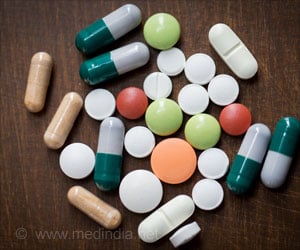Researchers have found that soil bacteria and bacteria that cause human diseases have recently swapped at least seven antibiotic-resistance genes.

"It is commonplace for antibiotics to make their way into the environment," says first author Kevin Forsberg, a graduate student. "Our results suggest that this may enhance drug resistance in soil bacteria in ways that could one day be shared with bacteria that cause human disease."
Among the questions still to be answered: Did the genes pass from soil bacteria to human pathogens or vice versa? And are the genes just the tip of a vast reservoir of shared resistance? Or did some combination of luck and a new technique for studying genes across entire bacterial communities lead the scientists to discover the shared resistance genes?
Humans only mix their genes when they produce offspring, but bacteria regularly exchange genes throughout their lifecycles. This ability is an important contributor to the rapid pace of bacterial evolution. When a bacterial strain develops a new way to beat antibiotics, it can share the strategy not only with its descendants but also with other bacteria.
Earlier studies by other scientists have identified numerous resistance genes in strains of soil bacteria. However, unlike the seven genes described in this report, the earlier genes were dissimilar to their analogs in disease-causing bacteria, implying that they had crossed between the bacterial communities a long time ago.
Most of the antibiotics used to fight illness today originated from the soil. Bacteria use the antibiotics, in part, as weapons to compete with each other for resources and survival. Scientists have long acknowledged that gives environmental bacteria an evolutionary incentive to find ways to beat antibiotics.
Advertisement
The researchers isolated bacteria from soil samples taken at various U.S. locations. The bacteria''s DNA was broken into small chunks and randomly inserted into a strain of Escherichia coli that is vulnerable to antibiotics. Scientists treated the altered E. coli with multiple antibiotics.
Advertisement
Scientists took the DNA from soil bacteria out of the surviving E. coli and prepared it for high-throughput sequencing. Dantas'' laboratory has developed techniques that make it possible to simultaneously sequence and analyze thousands of chunks of DNA from many diverse microorganisms. The DNA can be selected for a single function, such as antibiotic resistance.
When the scientists compared antibiotic-resistance genes found in the soil bacteria to disease-causing bacteria, they were surprised to find some genes were identical not only in the sections of the genes that code for proteins but also in nearby non-coding sections that help regulate the genes'' activities.
Since bacteria have such large population sizes and rapid reproduction times, their DNA normally accumulates mutations and other alterations much more quickly than the DNA of humans. The lack of changes in the resistance genes identified in the study suggests that the transfers of the genes must have occurred fairly recently, according to Dantas.
In some soil bacteria, the genes are present in clusters that make the bacteria resistant to multiple classes of antibiotics, including forms of penicillin, sulfonamide and tetracycline.
"I suspect the soil is not a teeming reservoir of resistance genes," Dantas says. "But if factory farms or medical clinics continue to release antibiotics into the environment, it may enrich that reservoir, potentially making resistance genes more accessible to infectious bacteria."
###
Forsberg KJ, Reyes A, Wang B, Selleck EM, Somer MOA, Dantas G. The shared antibiotic resistome of soil bacteria and human pathogens. Science, Aug. 31, 2012.
The Children''s Discovery Institute, the International Center for Advanced Renewable Energy and Sustainability at Washington University and the National Academies Keck Futures Initiatives supported this research.
Washington University School of Medicine''s 2,100 employed and volunteer faculty physicians also are the medical staff of Barnes-Jewish and St. Louis Children''s hospitals. The School of Medicine is one of the leading medical research, teaching and patient care institutions in the nation, currently ranked sixth in the nation by U.S. News & World Report. Through its affiliations with Barnes-Jewish and St. Louis Children''s hospitals, the School of Medicine is linked to BJC HealthCare.
Source-Newswise












